Scents and sensibility: The roses grown for an ancient perfume in a magical Marrakesh garden
Ancient ‘country roses’ cultivated for a centuries-old perfume industry are among the horticultural treasures of a welcoming retreat on the fringes of Marrakesh, finds Angelica Gray.

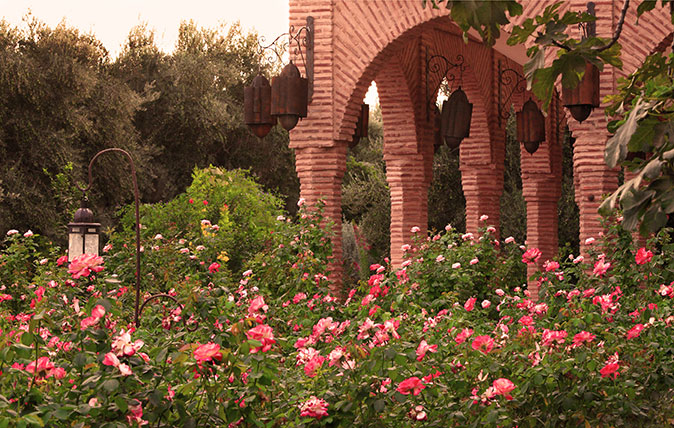
The Beldi Country Club is a bucolic retreat for frazzled city dwellers, just a ten-minute drive from the Medina walls, in the direction of the Atlas Mountains. There is no golf course, no ‘members only’ rule or strictures to keep off the grass, just an ocean of gardens dotted with biscuit-coloured vernacular buildings. Owner Jean Dominique Leymarie explains that he wanted to create the feeling of a rural douar or village, with winding streets and gentle rammed earth architecture.
Could this place be near in spirit to the garden city of Marrakesh described by travellers over the centuries? That may be a rom-antic notion but it is clear from the minute you arrive at the Beldi gates that romance is something Jean Dominique does well.
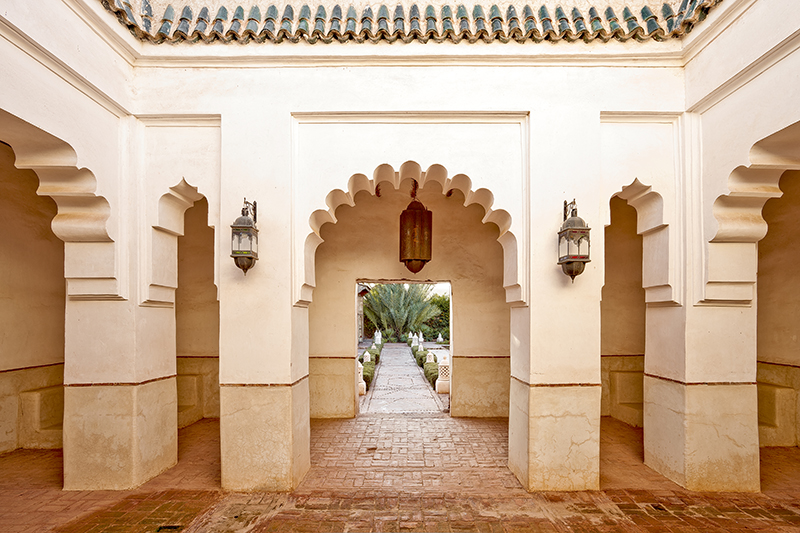
The perfume in the air is extraordinary. Before you catch even a glimpse of garden the delicate, complex scent of roses invades you like a magic potion conjured up by some benevolent jinn.
The Rose Garden which welcomes visitors to the Beldi has understandably become the signature of the club. A wide, formal path flanked by tunnels of bougainvillea leads into the complex, but it is impossible not to stop and admire the sight of 13,330 rose bushes arranged in two blocks on either side of the central feature. This was the first garden created on the site in 2005.
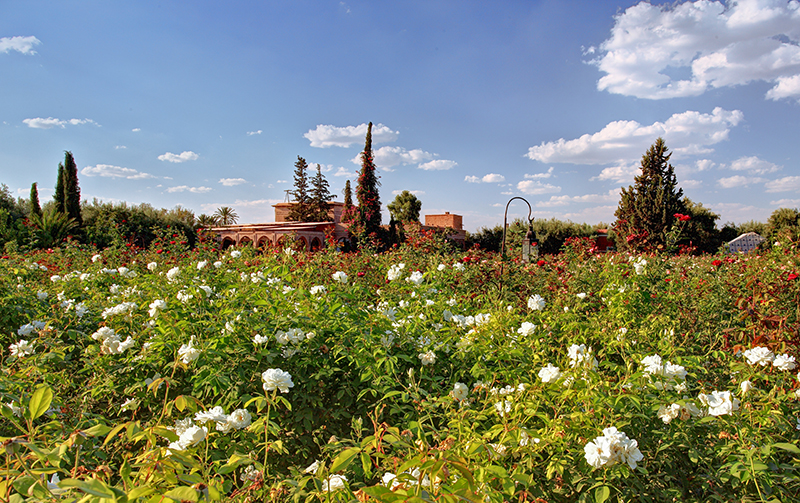
Marrakesh had a thriving rose production industry, based at La Targa, which collapsed after Independence in the 1950s, but Jean Dominique was keen not to use commercial varieties. He sourced his more rustic stock from old gardeners who had worked in the industry as young men and who still had knowledge of what they call ‘country roses’. It is perhaps this piecemeal approach to gathering his plants which has produced the charming rural meadow effect, with roses of all hues seemingly placed randomly, without any self-conscious attempt at artful colour-coordinated drifts.
Roses feature widely in the city, indeed Marrakesh is often referred to as ‘the rose among the palms’ and they have been used en masse in municipal bedding schemes such as those near the airport.
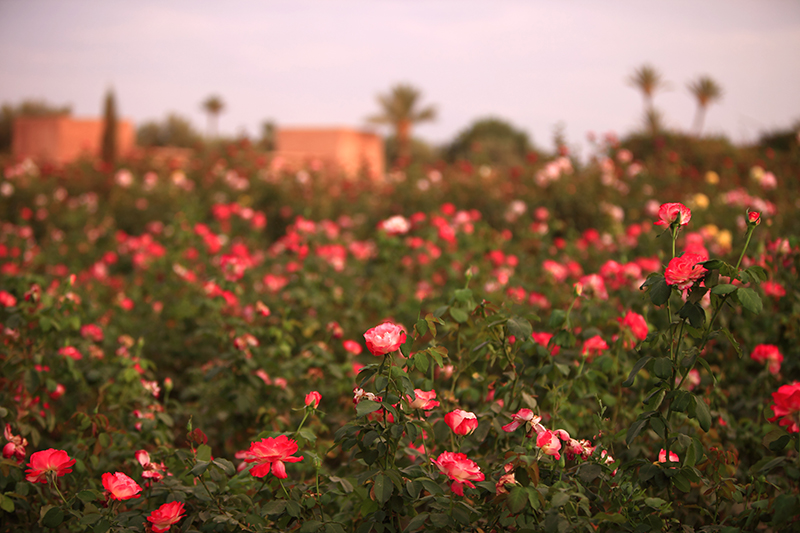
The Arabic word beldi translates as ‘traditional’, but in Morocco it evokes the authenticity of country life, of things well made in an artisanal fashion, and a certain pride in native culture. Beldi is also a variety of olive much grown in the region, which is cured at different stages of maturity to produce fruit of every shade: from green to pink, purple and black. The two meanings come together on this site with the olive trees of the original plot integrated into the garden, and the clear commitment to traditional construction materials and artisanal decoration.
Exquisite houses, the beauty of Nature, and how to get the most from your life, straight to your inbox.
The traditional and the olive are both present in the intimate, neutral toned, courtyard garden which follows the Rose Garden. The space is enclosed by walls constructed in pisé using local clay mixed with straw. The straw is visible in the finished surface, chopped up but fresh looking, as if the walls were made of dung from a farmyard.
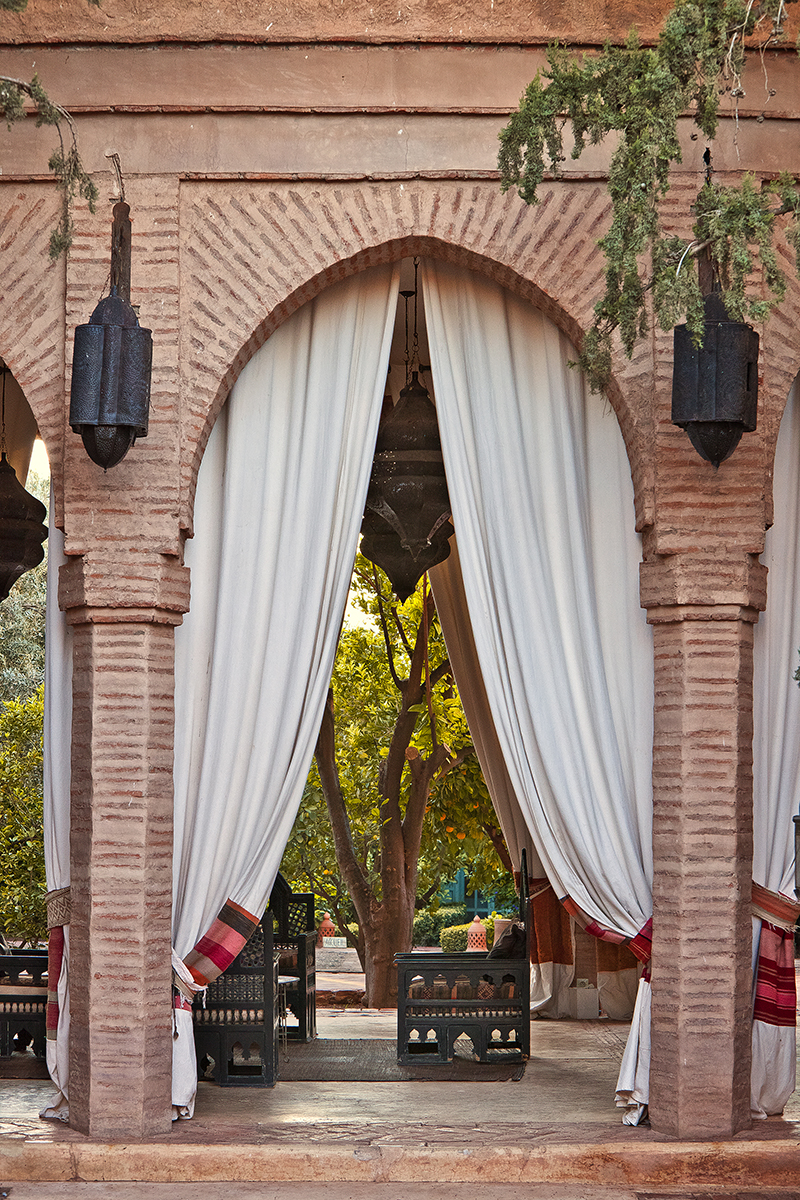
A collection of old, country-style wooden doors, decorated with geometric designs, is displayed against the walls, with a single olive tree standing tall in the centre of the space – beldi.
Jean Dominique modestly declares that he is no garden expert but, as in all the best gardens, it is his personality and vision which has shaped the guiding principles here. He resists the notion of design, saying that the gardens developed gradually as land became available, one following the other, each expressing a different idea but looped together loosely in a promenade.
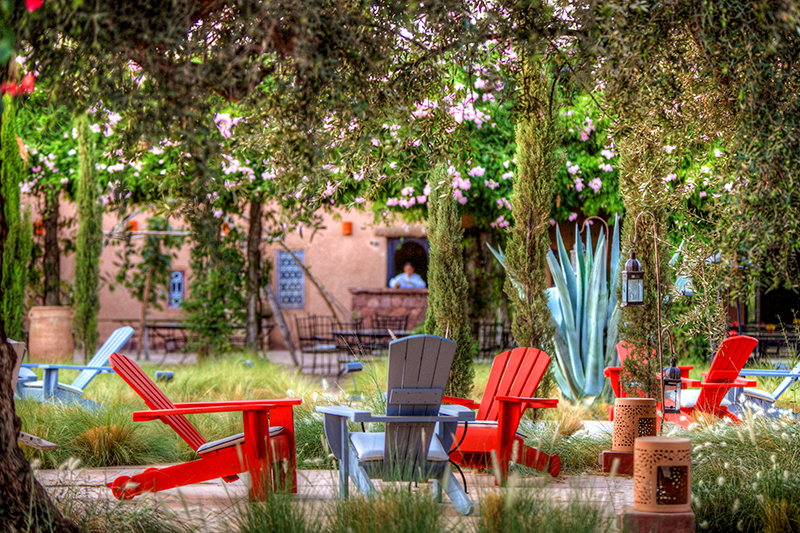
He favours a spontaneous approach to garden making: a basic idea, followed by the gathering of plant material which is then planted up in collaboration with his team of gardeners.
He admits that he sometimes has to tweak the results but believes that involving the gardeners at this level gives them a particular pride and sense of achievement which bears fruit. The artisans responsible for the hard landscaping have been given the same liberty, creating charming pebble motifs in the paths.
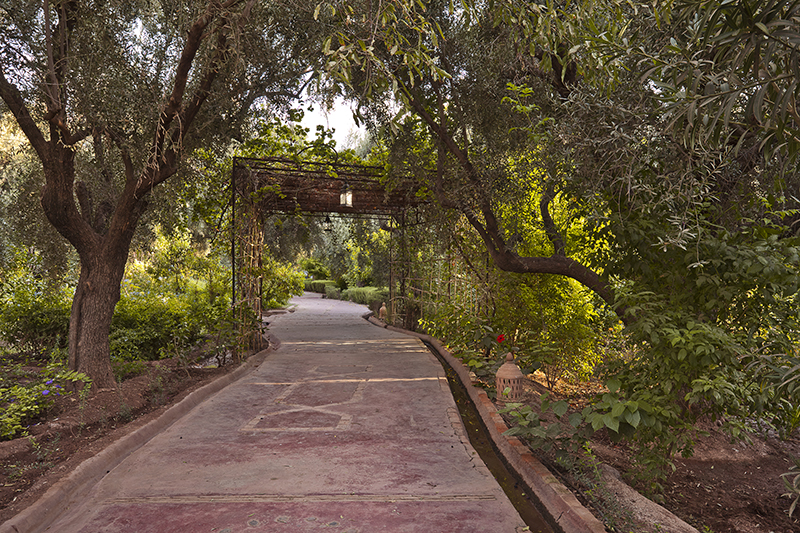
The Grass Garden contains a series of ‘hideouts’ where guests can sit privately with a drink among the shimmering stems of fountain grass, set with large specimen agaves. While the design is thoroughly modern there is an informal, playful quality here which shakes off any ‘designer look’.
The Pampas Pool has two rows of stately pampas grass (Cortaderia selloana) lining a rill flowing into a small square pool. It is hard to believe that this is the much maligned seventies favourite as their white plumes shine in the late October sun, alive with small birds feeding on the seed heads.
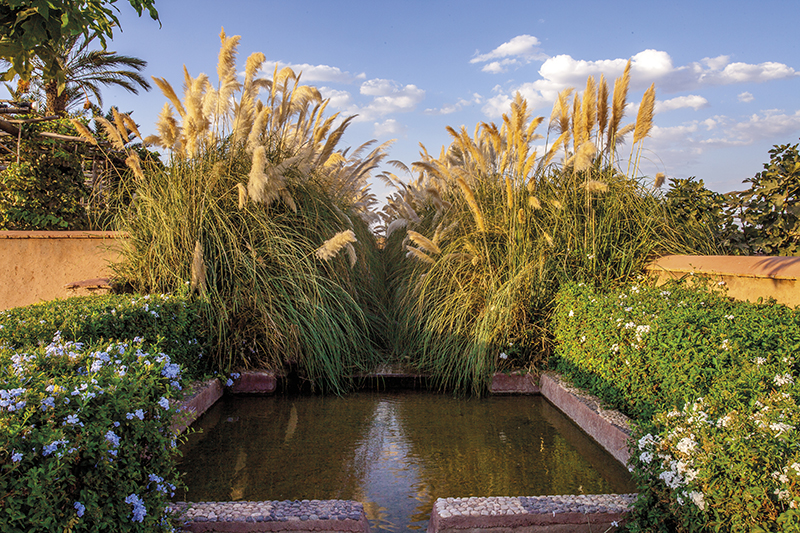
There is much to enjoy elsewhere: the humorous dichotomy of the Agave Pool where a shallow square pool is studded in the four corners and central island with drought-resistant Agave americana; the Small Cactus Garden; the tiny corridors of the Botanic Garden or the ‘walls’ made from large terra-cotta pots stacked on simple wooden shelves in the Lily Pool Garden.
As evening closes in, the birdsong becomes clamorous and conversation halts for a moment to enjoy the recital. This is a happy, healthy garden, one which Jean Dominique describes as Eden as he mounts his battered cream bicycle to go and check on his mischievous flock of guinea fowl.
Extracted from ‘Gardens of Marrakesh’ by Angelica Gray. Published by Frances Lincoln, an imprint of The Quarto Group (£14.99)
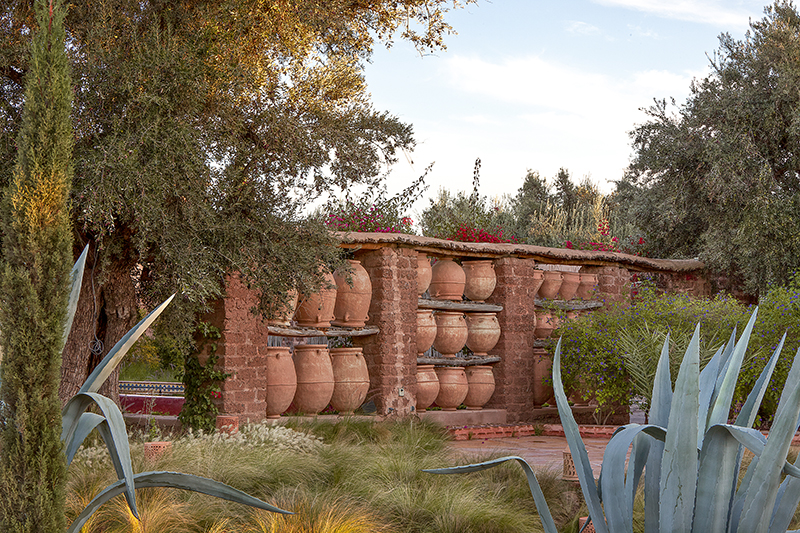
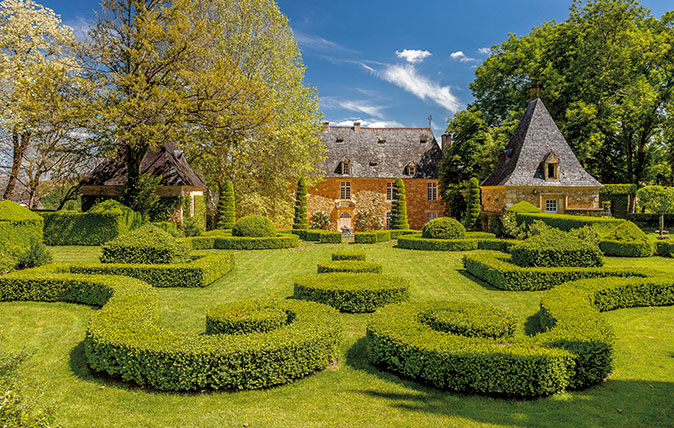
The Gardens of Eyrignac: A Dordogne jewel that was the vision of one incredible man
Gilles Sermadiras's family were horrified when he announced that he was to build a garden, and he did so while
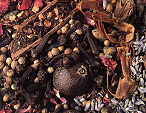
Ten essential kitchen spices
Peppers, cloves and cinnamon are among the must-haves for any kitchen spice rack – keep them somewhere dark and cool,
Country Life is unlike any other magazine: the only glossy weekly on the newsstand and the only magazine that has been guest-edited by His Majesty The King not once, but twice. It is a celebration of modern rural life and all its diverse joys and pleasures — that was first published in Queen Victoria's Diamond Jubilee year. Our eclectic mixture of witty and informative content — from the most up-to-date property news and commentary and a coveted glimpse inside some of the UK's best houses and gardens, to gardening, the arts and interior design, written by experts in their field — still cannot be found in print or online, anywhere else.
